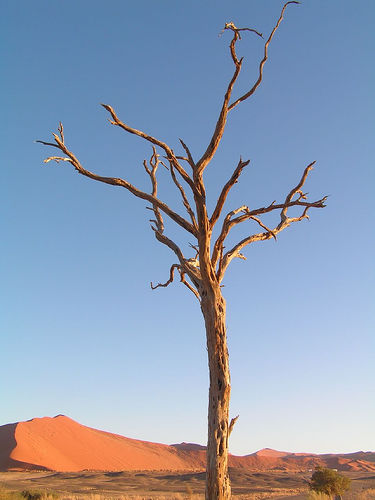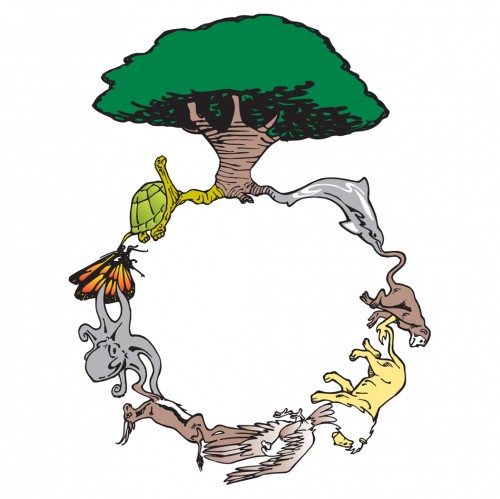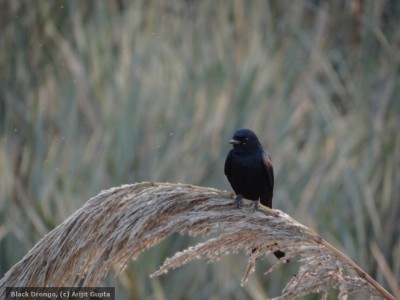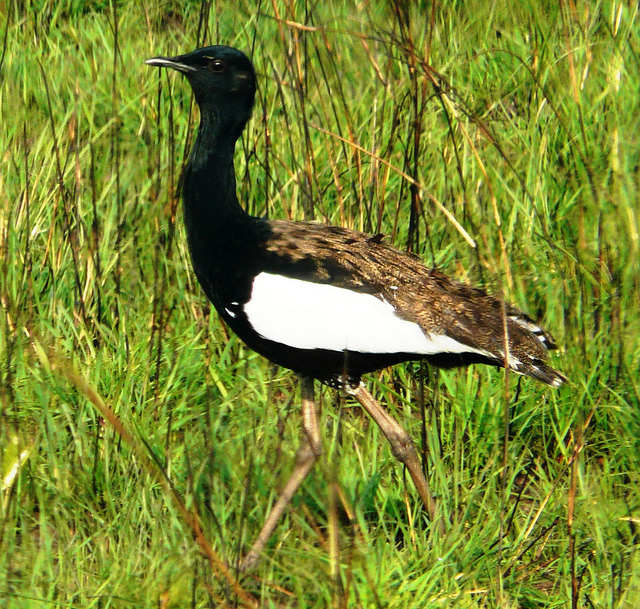It is the year 2080 and it is not the world you would like to live in. Planet Earth is a lot hotter and a lot less greener with more than half of common plants and one third of the animals that we easily see today, becoming rare or extinct. This is the alarming prediction of a new research published yesterday that reveals that if climate change warnings are not taken seriously, the present century may end up losing a large chunk of flora and fauna.
The new research conducted by scientists from the University of East Anglia and published in the journal Nature Climate Change looked at 50,000 species of plants and animals worldwide.
The researchers found that if nothing is done to counter the effects of global warming being felt at present, by the year 2080, half of the common plants on earth and one third of animals will lose their climate range. This means the ecosystem or the habitat that helps an animal or plant survive will be lost and this will automatically lead to the species becoming endangered.
Worldwide Biodiversity Loss
The results of this present research are shocking as it suggests that the geographic range of animals and plants is shrinking everywhere.
In India concerns are already rising on the shrinking habitat of the Tiger. Even if human interference is one of the major reasons for this loss of forest cover, global warming too can add to the woes for the tiger.
The endangered olive ridley turtle is another major species whose population can be drastically hit by climate change. Indian shores are a major nesting ground of the turtle and a plausible impact of global warming which is already being noted is the shrinking beaches, leading to decreeasing nesting sites of the turtle. With no place to nest or hatch their eggs, the turtles might slowly but surely continue to decline in numbers as the earth becomes hotter.
The researchers fear that the greatest impact of climate change will be on plants, reptiles and amphibians.
The geographical regions of the world which will lose most of their plants and animals are,
- Sub-Saharan Africa
- Central America
- Amazonia
- Australia
Regions that will have major loss of plant species are,
- North Africa,
- Central Asia
- South-eastern Europe
The study was led by Dr Rachel Warren from UEA’s school of Environmental Sciences.
She said, “While there has been much research on the effect of climate change on rare and endangered species, little has been known about how an increase in global temperature will affect more common species.
“This broader issue of potential range loss in widespread species is a serious concern as even small declines in these species can significantly disrupt ecosystems.
The research shows that the species that we see commonly today like the common Myna or plants like Bougainvillea or Jasmine might become rare sights in the future as their range and habitat is destroyed due to extreme heat.
“Our research predicts that climate change will greatly reduce the diversity of even very common species found in most parts of the world. This loss of global-scale biodiversity would significantly impoverish the biosphere and the ecosystem services it provides,’ says the researcher.
From One to Hundreds
The team also adds that it is not just the direct impact of climate change that can create problems. With rise in temperature, there are drastic weather changes, increase number of pests, and increase in diseases. It is these reasons too that may kill a number of plants and animals.
The bad news is once a species begins to become rare, especially a plant which is the primary producer and food for many animals, these animals too will begin to perish.
“Animals in particular may decline more as our predictions will be compounded by a loss of food from plants,”Dr. Warren.
Humans will surely be the worst to be affected. If half of common plant species and one third of animal species are impacted, that would mean less natural resources, water scarcity, shortage of clean air , impact on flood control, lack of nutrients, food, fodder, and direct/indirect affect on all industries depending on these plants and animals.
“There will also be a knock-on effect for humans because these species are important for things like water and air purification, flood control, nutrient cycling, and eco-tourism,” the researcher says.
No Time to Lose
The scientists however also found that if actions to mitigate the problems arising from climate change are taken now, the plants and animals can get an extra leash of life. Addressing climate change can save at least 60 percent of these species and give them 40 years of extra time to adapt to the changes.
According to the published research this is because,
‘This mitigation would slow and then stop global temperatures from rising by more than two degrees Celsius relative to pre-industrial times (1765). Without this mitigation, global temperatures could rise by 4 degrees Celsius by 2100.’
Thus, by resolving to reduce climate change effects, the temperature rise might be halved, giving plants and animals an extra four decades to adapt and try to survive in under the changed circumstances.
Dr Warren said: “Prompt and stringent action to reduce greenhouse gas emissions globally would reduce these biodiversity losses by 60 per cent if global emissions peak in 2016, or by 40 per cent if emissions peak in 2030, showing that early action is very beneficial. This will both reduce the amount of climate change and also slow climate change down, making it easier for species and humans to adapt.”
Climate change is not the concern of a region or a country anymore, but a global problem that has to be tackled at a global level. The significant environment loss can only be lessened if individuals come together making every possible choices that would lessen warming.
Just like in nature, when a presence or an absence of a creature affects the lives of many other individuals, if a corrective measure to tackle global warming challenge is taken at any point or by any individual, it will help secure and preserve a lot of interconnected life forms, including plants, animals and humans.
More Related Stories,
Turtle Nesting Sites Facing the Heat
Indian Birds Need Help to Combat Climate Change
Marine Animals Shrinking due to Global Warming
Image courtesy Kevin Pluck , Nodnarb Truk via cc/Flickr and lifecyclecelebrations









3 thoughts on “By 2080 Climate Change might Eat Away Most Plants and Animals”